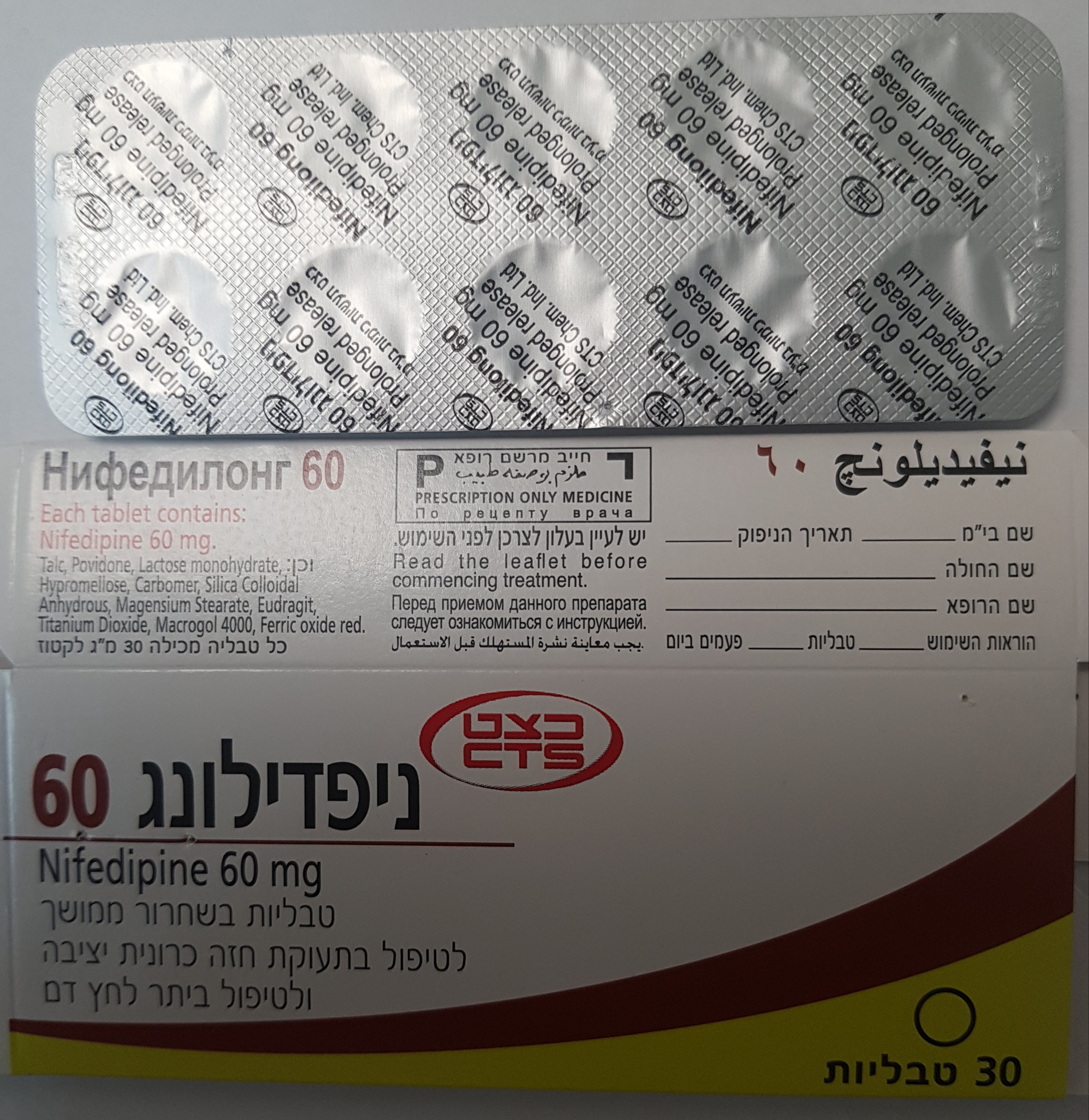Quest for the right Drug

ניפדילונג 60 NIFEDILONG 60 (NIFEDIPINE)
תרופה במרשם
תרופה בסל
נרקוטיקה
ציטוטוקסיקה
צורת מתן:
פומי : PER OS
צורת מינון:
טבליות בשחרור ממושך : TABLETS PROLONGED RELEASE
עלון לרופא
מינוניםPosology התוויות
Indications תופעות לוואי
Adverse reactions התוויות נגד
Contraindications אינטראקציות
Interactions מינון יתר
Overdose הריון/הנקה
Pregnancy & Lactation אוכלוסיות מיוחדות
Special populations תכונות פרמקולוגיות
Pharmacological properties מידע רוקחי
Pharmaceutical particulars אזהרת שימוש
Special Warning עלון לרופא
Physicians Leaflet
Adverse reactions : תופעות לוואי
4.8 Undesirable effects Adverse drug reactions (ADRs) based on placebo-controlled studies with nifedipine sorted by CIOMS III categories of frequency (clinical trial data base: nifedipine n = 2,661; placebo n = 1,486; status: 22 Feb 2006 and the ACTION study: nifedipine n = 3,825; placebo n = 3,840) are listed below: ADRs listed under "common" were observed with a frequency below 3% with the exception of oedema (9.9%) and headache (3.9%). The frequencies of ADRs reported with nifedipine-containing products are summarised in the table below. Within each frequency grouping, undesirable effects are presented in order of decreasing seriousness. Frequencies are defined as common (≥1/100 to < 1/10), uncommon (≥ 1/1,000 to < 1/100) and rare (≥ 1/10,000 to <1/1,000). The ADRs identified only during the ongoing postmarketing surveillance, and for which a frequency could not be estimated, are listed under “Not known”. System Common Uncommon Rare Not Known Organ Class (MedDRA) Blood and Agranulocytosis Lymphatic Leucopenia System Disorders Immune Allergic reaction Pruritus Anaphylactic/ System Allergic Urticaria anaphylactoid Disorders oedema/angioede Rash reaction ma (incl. larynx oedema*) Psychiatric Anxiety reactions Disorders Sleep disorders Metabolism Hyperglycaemia and Nutrition Disorders Nervous Headache Vertigo Migraine Par- Hypoaesthesia System Dizziness Tremor /Dysaesthesi Somnolence Disorders a Eye Disorders Visual Eye pain disturbances Cardiac Tachycardia Chest pain Disorders Palpitations (Angina pectoris) Vascular Oedema (incl. Hypotension Disorders peripheral Syncope oedema) Vasodilatation Respiratory, Nosebleed Dyspnoea Thoracic, and Nasal congestion Pulmonary Mediastinal oedema** Disorders Gastrointestina Constipation Gastrointestinal Gingival Bezoar l Disorders and abdominal hyperplasia Dysphagia pain Nausea Intestinal Dyspepsia obstruction Intestinal ulcer Flatulence Dry Vomiting mouth Gastroesophagea l sphincter insufficiency Hepatobiliary Transient increase Jaundice Disorders in liver enzymes Skin and Erythema Toxic Epidermal Subcutaneous Necrolysis Tissue Photosensitivity Disorders allergic reaction Palpable purpura Musculoskelet Muscle cramps Arthralgia al and Joint swelling Myalgia Connective Tissue Disorders Renal and Polyuria Dysuria Urinary Disorders Reproductive Erectile System and dysfunction Breast Disorders General Feeling unwell Unspecific pain Disorders and Chills Administration Site Conditions * = may result in life-threatening outcome **cases have been reported when used as tocolytic during pregnancy (see section 4.6) In dialysis patients with malignant hypertension and hypovolaemia a distinct fall in blood pressure can occur as a result of vasodilation. Reporting of suspected adverse reactions: Reporting suspected adverse reactions after authorisation of the medicinal product is important. It allows continued monitoring of the benefit/risk balance of the medicinal product. Any suspected adverse events should be reported to the Ministry of Health according to the National Regulation by using an online form https://sideeffects.health.gov.il/

שימוש לפי פנקס קופ''ח כללית 1994
Hypertension, vasospastic angina (Prinzmetal), chronic stable angina
תאריך הכללה מקורי בסל
01/01/1995
הגבלות
תרופה שאושרה לשימוש כללי בקופ'ח
מידע נוסף
